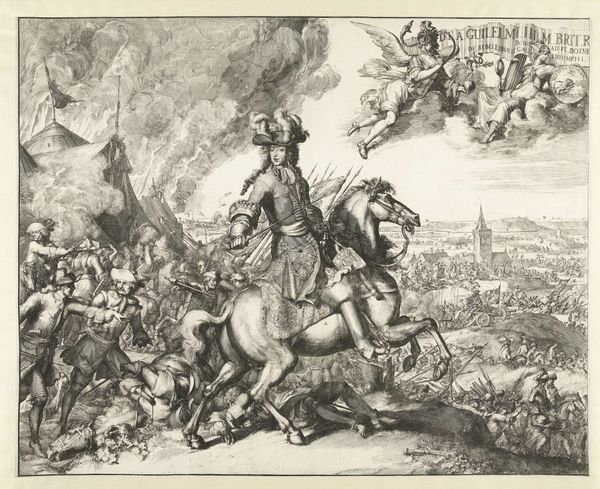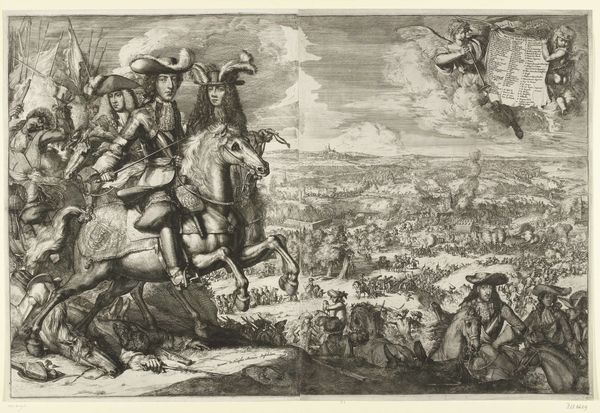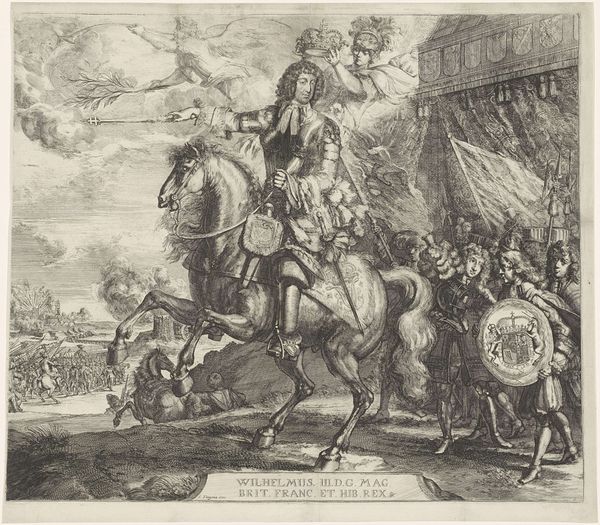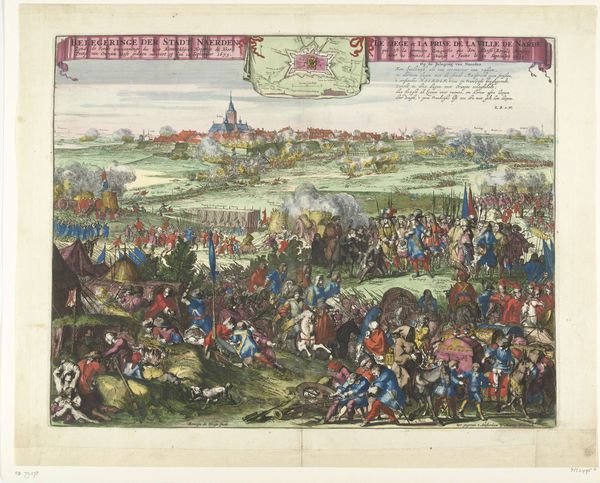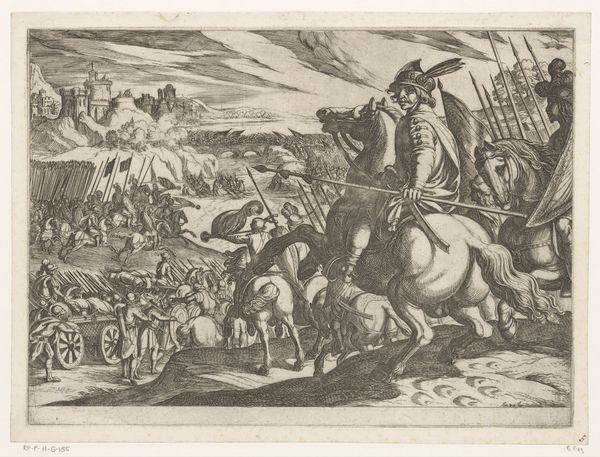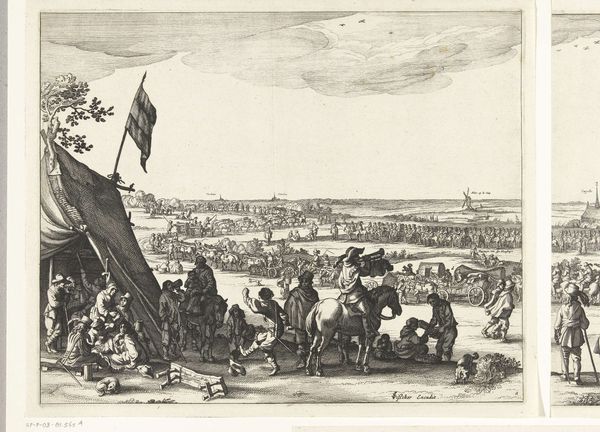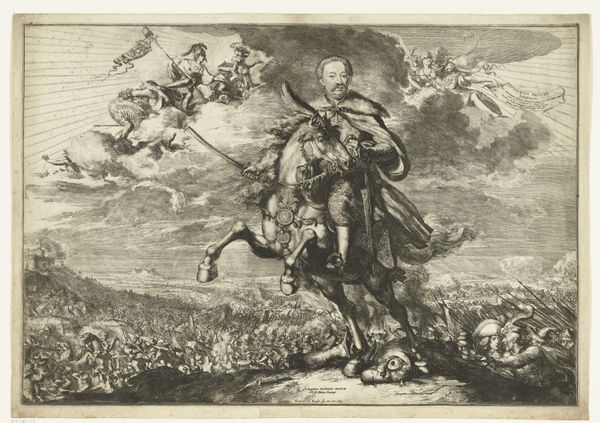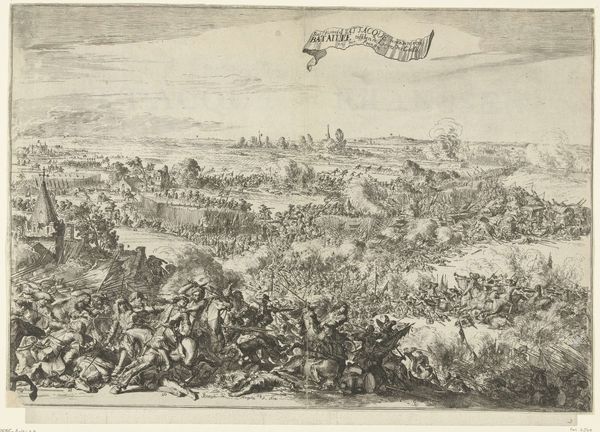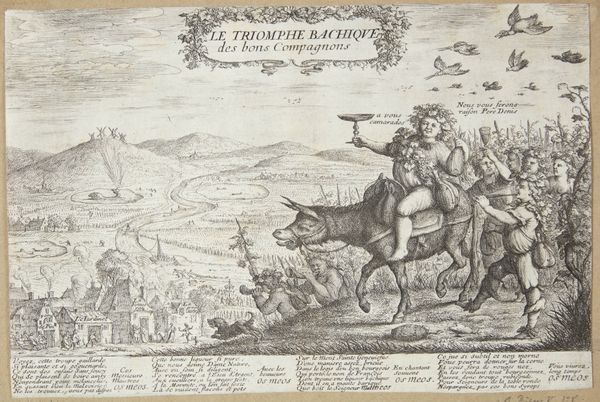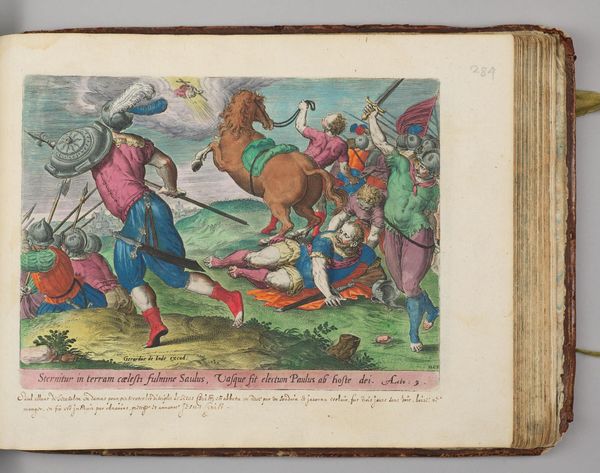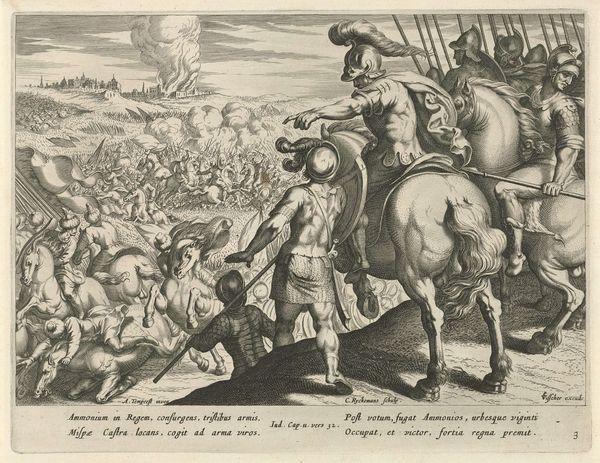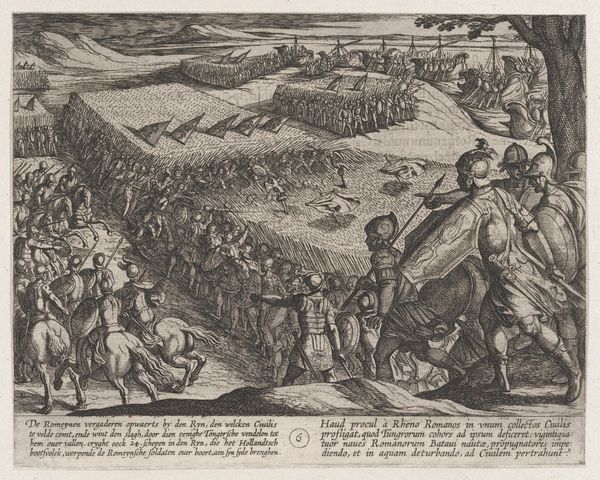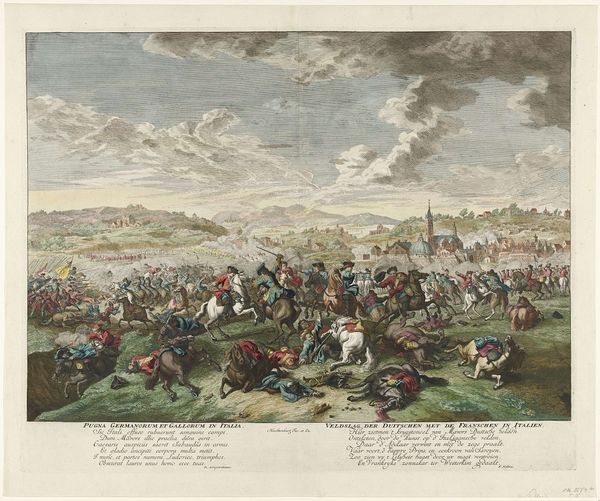
print, engraving
#
baroque
# print
#
landscape
#
cityscape
#
history-painting
#
engraving
Dimensions: height 555 mm, width 845 mm
Copyright: Rijks Museum: Open Domain
Curator: Here we have "The Battle of St. Denis, 1678", a print by Romeyn de Hooghe dating back to the very year it depicts. It’s a historical scene, and an engraving, offering a fascinating view into both military strategy and 17th-century printmaking techniques. Editor: Well, just looking at it, it feels like controlled chaos, doesn't it? The composition is really split, with a grandiose display on the left and then almost a god’s-eye view of mayhem on the right. Sort of grandiose up front, practical from behind. What strikes me first is the absurd theatricality amid so much destruction. Curator: Precisely! It uses that tension to present a layered social commentary. The grand figures on horseback are symbols of power, achieved, crucially, through these violent conflicts that impact resources and ordinary labor. The city and landscape below become commodities. How resources were used to disseminate printed information about military prowess, too. It shows how prints also bolstered individual reputations of battlefield heroes. Editor: I see what you mean, a real exercise in controlled dissemination...And these angels unfurling that list? Are they keeping score? I almost missed it amid all the horsemanship. It reads like the final credits to a brutal, drawn-out stage production. What does the engraving process add, or even subtract, from the depiction? Curator: I think the engraving – with its reproducible form - democratized the narrative of power while simultaneously abstracting from the violence itself. The ability to create multiples transforms the event from a unique lived experience to something distributed, consumed, and ultimately controlled as information. Also, color tinting! See how subtle the layering is of watercolor across each engraving. Another economic and artisanal point. Editor: Hmm, distributed controlled consumption…yes. But still that tension! Even if it's distributed, the initial artistry involved is evident. I can sense the human hand behind those furious lines, translating something terrible into art. There’s a real energy pulsing through it. Curator: So it is, a negotiation between artistic license and mechanical reproduction, crafting, even controlling public memory and valorizing political agency. It prompts us to really examine whose narrative is given prominence. Editor: It does get you thinking beyond just the image, about who gets to tell the story, and how its repeated again and again! I won’t lie, though, next time I need to settle an argument, I will be making note of those angels. Curator: That, truly, may be this engraving's most relevant enduring feature.
Comments
No comments
Be the first to comment and join the conversation on the ultimate creative platform.
